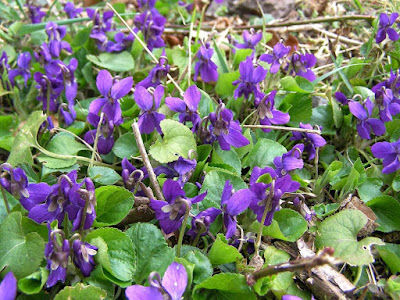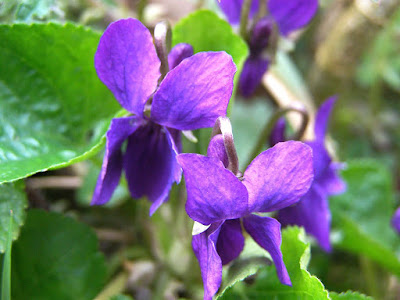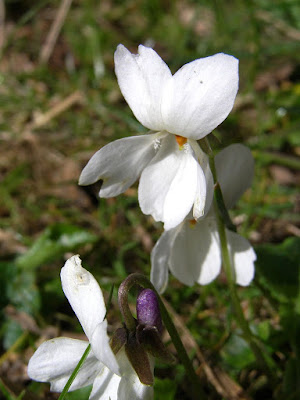Malcolm and I had an interesting walk this morning along the Nutbrook Trail and were greeted by the sight of more and more spring flowers. Daffodils of several sizes and colours were in abundance, but a little further along, we came across several patches of wild violets, in this case Hairy Violets Viola hirta.

Close up these beautiful little flowers are indeed very blue.

But, continuing along the trail, we soon came across a patch of flowers which poured doubt upon the well-known rhyme.

These little flowers are still violets, but in this case Sweet Violets Viola odorata. Sweet violets are Britain's only fragrant violets - not that I was about to get on my hands and knees to confirm that!
Turning homeward and dodging the light hail showers which had begun, we found another denizen of springtime, the Lesser Celandine Ranunculus ficaria.

Lesser Celandine used to be known as 'Pilewort' and, as the name suggests, they were used to treat haemorrhoids. It was thought that their knobbly tuberous root system resembled 'piles' and therefore could cure them! The Germans had a much more scientific approach and found that the young leaves were high in vitamin C. Because of this, they found it helped to cure scurvy - leading to another old name for the plant, Scurvywort.
No comments:
Post a Comment